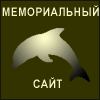| |
(2). PP. 145(173.
31. Pettigrew T. The Mental Health Impact. In Impacts of Racism on White
Americans. Browser B.P. and Hunt R.J., eds. Beverly Hills. CA: Sage. 1981.
32. Sherif M. and Sherif C.W. Groups in Garmony and Tension : An
Integration of Studies on Intergroup Relations. N.Y.: Octagon. 1953.
33. Robie C., Ryan A.M., Schmieder R.A., Fernando L, and Smith P.C. The
Relation between Job level and Job Satisfaction. Group and Organization
Management. 1998. Vol. 23. № 4. PP. 470(492.
34. Job Satisfaction: How People Feel about Their Jobs and How It Affects
Their Performance. Cranny C.J., Smith P.C., and Stone, E.F. eds. Lexington, MA:
Lexington Books. 1992.
35. Hoppock R. Job Satisfaction. New York: Harper & Row. 1935.
36. Locke E.A. The Nature and Causes of Job Satisfactions. In Handbook of
Industrial and Organizational Psychology. Dunnette M.D., ed. Chicago: Rand
McNally. 1976. PP. 1297(1349.
37. West M. Micropolitics, Leadership and All That...The Need to Increase
the Micropolitical Awareness and Skills of School Leaders. School Leadership
and Management. 1999. Vol. 19. № 2. PP. 189(195.
38. Hoyle E. Micropolitics of Educational Organisations, Education
Management and Administration, 10 (2). 1982. PP. 87(98.
39. Janis I. Groupthink: Psychological Studies of Policy Decision and
Fiascos. Boston, MA: Hougton-Miffin. 1982.
40. Lindle J.C. What can the Study of Micropolitics Contribute to the
Practice of Leadership in Reforming School? School Leadership and Management.
1999. Vol. 19. № 2. PP. 171(178.
41. Watson W.E., Jonson L., and Merritt D. Team Orientation,
Self-orientation, and Diversity in Task Groups. Their Connection to Team
Performance over Time. Group @ Organizational Management. 1998. Vol. 23. № 2.
PP. 161(188.
42. Schein E.H. Process Consultation. Vol. 1. Reading, MA: Addison-Wesley.
1998.
43. Smith K.K. and Berg D.N. Paradoxes of Group Life. San Francisco:
Jossey-Bass. 1987.
44. Stogdill R.M. Individual Behavior and Group Achievement. London:
Oxford University Press. 1959.
45. Schmitt N.W. and Klimovski R.J. Research Methods in Human Resource
Management. Cincinnati, OH: South-Western. 1991.
46. Goby V.P. All Business Students Need to Know the Same Things! The
Non-Culture Specific Nature of Communication Needs. Journal of Business and
Technical Communication. 1998. Vol. 13. № 2. PP. 179(189.
47. Geraldine H. and Bratia V. Graduate Business Students. Preferences
for the ManageriaL Communication Course Curriculum. Business Communication
Quarterly, 59. 1996. PP. 45(55. (About the same in the USA).
48. Jiang J.J., Klein G., and Margulis S. Important Behavior Skills for
IS Project Managers: The Judgements of Experienced IS Professionals. Project
Management Journal. 1998. Vol. 29. № 1. PP. 39(43.
49. May R., Young C.B., and Ledgerwood D. Lessons from Russian Human
Resource Management Experience. European Management Journal. Special Issue:
Russia et al 1998. Vol. 16. №4. PP. 447(459.
50. Pedler M., Burgoyne J., and Boydell T. The Learning Company. The
MacGraw –Hill Companies. 1997. 243 p.
51. Beamish P.W., Fey C.F. Strategies for Managing Russian International
Joint Venture Conflict European Management Journal. 1999. Vol. 17. № 1. PP.
99(106.
52. Luthans F., Stajkovic A., Luthans B.C., and Luthans K.W. Applying
Behavioral Management in Eastern Europe. Europian Management Journal. Special
Issue: Russia, Central and Eastern Europe. 1998. Vol.16. № 4, August. PP.
466(475.
53. Carroll J.S. Organizational Learning Activities in High-hazard
Industries: The logics Underlying Self-Analysis. Journal of Management Studies.
1998. Vol. 35. № 6. PP. 699(718.
54. Creativity. Ed. by Vernon P.E. London: Penguin Books. 1970. 400 p.
55. Woodman R.W., Sawyer J.E., and Griffin R.W. Toward a Theory of
Organizational Creativity// The Academy of Management Review. 1993. Vol. 18. №
2. PP. 293(321.
56. http://www.bellhowell.infolearning.com. Anonymous. Making Workers
More Creative // The Futurist, Apr. 1999. Vol. 33.
57. http://www.bellhowell.infolearning.com. Palo Alto. Organizational
Innovation and Organizational Change//Annual Review of Sociology. 1999.
58. http://www.bellhowell.infolearning.com. Moore III.R.M. (2000).
Creativity of Small Groups and of Persons Working Alone// The Journal of Social
Psychology. Februar. Vol. 140.
ГЛАВА 2. МОДЕЛЬ РЕФЛЕКСИВНОГО УПРАВЛЕНИЯ1
Ключевые понятия главы:
1. Проблематизация работы. Эволюция подходов и проблем управления.
Цеховая организация. Фабричная организация. Поведенческие теории. Теория
самоорганизации.
2. Рефлексивное управление.
|
|




